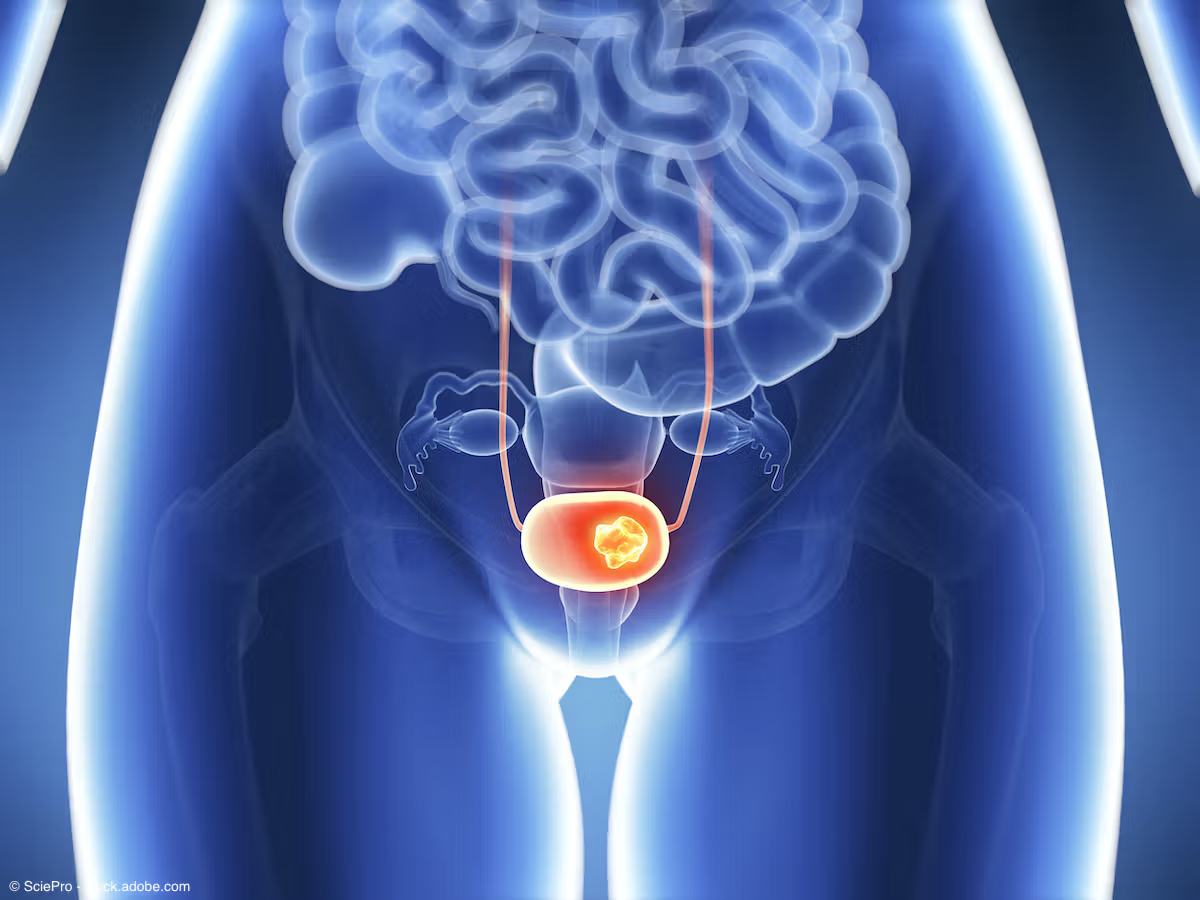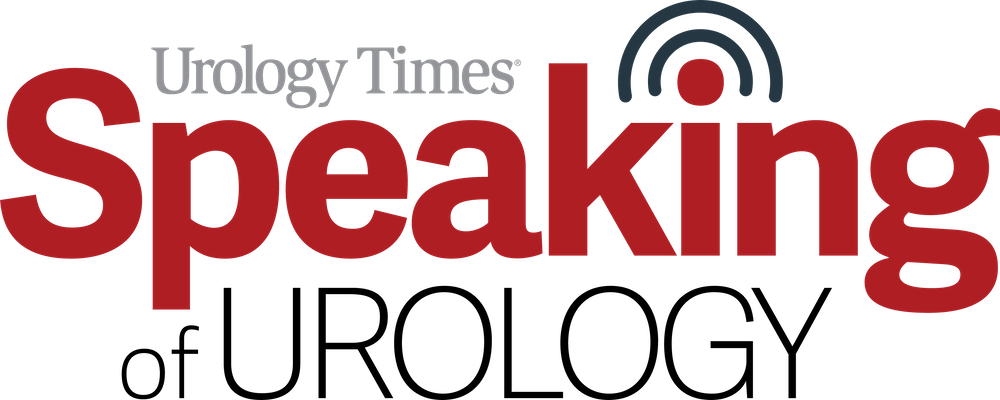News
Article
Nadofaragene firadenovec elicits high CR rate in phase 3 trial in Japan
Key Takeaways
- Nadofaragene firadenovec achieved a 75% complete response rate at 3 months in Japanese patients with high-risk BCG-unresponsive NMIBC.
- The therapy demonstrated a favorable safety profile, with no grade 3, 4, or 5 adverse events reported.
Treatment with nadofaragene led to a complete response rate of 75% at 3 months.
Nadofaragene firadenovec-vncg (Adstiladrin) demonstrated a high complete response rate among Japanese patients with high-risk BCG-unresponsive non–muscle invasive bladder cancer (NMIBC) with carcinoma in situ (CIS) with or without papillary tumors (±Ta/T1), according to findings from a phase 3 trial (NCT05704244).
Nadofaragene was approved in the US in December 2022.

The data were presented at the 112th Annual Meeting of the Japanese Urological Association in Fukuoka, Japan.1
Overall, treatment with nadofaragene led to a complete response (CR) rate of 75% (15 of 20) at 3 months.
Regarding safety, 80% (16 of 20) of patients experienced a treatment-related adverse event (AE), with 76 total AEs reported. Of those, 84.2% were grade 1, and 15.8% were grade 2. No grade 3, 4, or 5 AEs were reported.
“When BCG therapy is ineffective, patients are forced to choose invasive surgery, i.e., total bladder removal, but nadofaragene firadenovec may provide a new treatment option,” explained Professor Keiji Inoue, MD, PhD, department of urology at Kochi Medical School, in a news release on the results.1 “These findings are particularly significant for Japanese patients, as our treatment options have been more limited compared to other regions. The ability to achieve such promising results represents an important advancement for our clinical practice.”
In total, the open-label, phase 3 study plans to enroll 25 patients with high-risk BCG-unresponsive NMIBC.2 The safety and efficacy of nadofaragene is being assessed across 2 cohorts: patients with CIS with or without high-grade Ta/T1 disease and patients with papillary tumors only.
To be eligible for enrollment, patients need to have a life expectancy greater than 2 years and an ECOG performance score of 2 or less. Patients in the study received intravesical nadofaragene once quarterly without reinduction. The primary outcome measure is CR rate at any time point following the first dose.
Final study completion is anticipated for September 2029.
Additional data on nadofaragene
Nadofaragene wasapproved in the US in December 2022 for adult patients with high-risk BCG-unresponsive NMIBC with CIS with or without papillary tumors.3 The therapy has not been approved in Japan.
Approval in the US was supported by data from the phase 3 CS-003 trial (NCT02773849), in which nadofaragene induced a CR at any time point in 51% (95% CI, 41% to 61%) of patients. Among the responders, 46% remained in CR for at least 1 year. The median duration of response was 9.7 months. Final follow-up data at 60 months showed an overall survival of 80% and a cystectomy-free survival of 49%.
Real-world data on the therapy were also recently presented at the 2025 American Society of Clinical Oncology Genitourinary Cancers Symposium in San Francisco, California, showing a 3-month CR rate of 79% among patients treated with nadofaragene across Mayo Clinic locations.4
"These initial phase 3 findings from Japan affirm the safety profile of Adstiladrin, demonstrating a 3-month efficacy that appears to be higher than previously reported in our phase 3 clinical trial, and consistent with results from an ongoing independent real-world study presented earlier this year,” said Joern Jakobsen, MD, PhD, vice president and head of global research and medical for uro-oncology and urology at Ferring Pharmaceuticals, in the news release.1 “Collectively, the data are broadening our understanding of the value that Adstiladrin offers, furthering our journey to establish Adstiladrin as the new standard of care and backbone therapy across the urothelial cancer disease spectrum.”
REFERENCES
1. Ferring announces initial data from phase 3 trial in Japanese patients demonstrating 75% complete response rate at 3 months with (nadofaragene firadenovec) in BCG-unresponsive NMIBC patients. News release. Ferring Pharmaceuticals. Published online and accessed April 21, 2025. https://www.businesswire.com/news/home/20250421675994/en/Ferring-Announces-Initial-Data-from-Phase-3-Trial-in-Japanese-Patients-Demonstrating-75-Complete-Response-Rate-at-3-Months-with-nadofaragene-firadenovec-in-BCG-unresponsive-NMIBC-Patients1
2. Safety and efficacy of FE 999326 administered intravesically to Japanese subjects with high-grade, BCG unresponsive, non-muscle invasive bladder cancer (NMIBC). ClinicalTrials.gov. Last updated February 13, 2025. Accessed April 21, 2025. https://clinicaltrials.gov/study/NCT05704244
3. FDA approves first adenoviral vector-based gene therapy for high-risk Bacillus Calmette-Guérin unresponsive non-muscle invasive bladder cancer. News release. US Food & Drug Administration. December 16, 2022. Accessed April 21, 2025. https://www.fda.gov/drugs/resources-information-approved-drugs/fda-approves-first-adenoviral-vector-based-gene-therapy-high-risk-bacillus-calmette-guerin
4. Moyer JA, Durant A, Nguyen M, et al. Real-world outcomes of nadofaragene firadenovec in BCG-unresponsive non-muscle invasive bladder cancer. Presented at: 2025 American Society of Clinical Oncology Genitourinary Cancers Symposium. San Francisco, California. February 13-15, 2025. https://ascopubs.org/doi/10.1200/JCO.2025.43.5_suppl.716

















